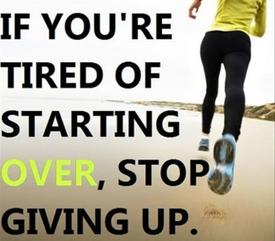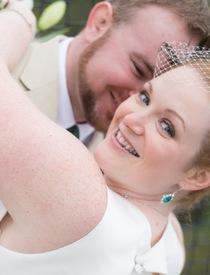You're probably eating more than you think.
Replies
-
i just quote the questions and replied to them0
-
i just quote the questions and replied to them
Could you link to where you posted. The actual thread with the questions itself is locked so people cannot respond in that thread - a new thread needs to be started for each person.0 -
1) What's your current intake of calories, on average? This is TOTAL CALORIES EATEN so this would include anything you eat for exercise calories. In other words, how much are you eating?
2) What's your current average intake of protein, carbs, and fats, in grams?
3) Do you use a food scale and measure everything?
4) Do you track all of your intake, daily? (Everything?)
5) Do you take cheat days or days off?
6) How much weight have you lost so far?
7) What is your activity like, both exercise and non-exercise? (big difference between a construction worker and a desk job) and did you change that activity withing the last couple of months. If so, what changed.
8) How long have you eaten at your previous amount and what happened in that time frame?
9) What's your height, current weight and if you know it, bodyfat%?
10) If you're stalled, for how long and is it a complete stall (zero change in weight)?
1. about 2200 calories, i exercise about 1100 of them off usually
2. about 90g protein, 40 g fat, 200g carbs
3. Yes i use a food scale to measure everything, even condiments
4. I log everything in as far as what i eat and drink
5. I don't take cheat days or take days off
6. I have lost 57lbs currently
7. I work a desk job, but i lift between 3-4 days a week and run 3 days a week
8. i ate at my previous amount for the last 6 months
9. my height is 6'1, current weight is 226 and my body fat % is 28.1
10. I have been fluctuating between 225 and 227 for the last 2 to 3 weeks.0 -
@thekyleo
I have posted a separate thread as it is off topic for this one.
See here:
http://www.myfitnesspal.com/topics/show/874018-intake-question0 -
Answering the original topic...
It is highly unlikely I am eating more than I think. If I eat around 2400kcal a day, according to my logging, I lose weight. This suggests that I over estimate my calories, seeing as no calculator would ever predict that to be the case (165cm, 57kg (when I lost on 2400), no intentional exercise).
I eat a lot of food that I don't cook, including lunch at the school where I work pretty much every day of term. Most of their food is probably around about homemade calories, so it may be that by using commercial items on the database I grossly overestimate the calories.
I guess someone has to be the exception to the rule :laugh:0 -
For things that are measured, like soup or such, that serving size figure is many times by volume rather than weight.
But, "about 2 servings per can" for 8 oz serving in a 15.25 oz can is 1.9. Found some stuff the about 2 is really 1.7.
Some soups may not matter much (10 cal) because so low calorie anyway, but the more hearty stuff does add up.
But it's so easy in MFP to select 1 serving size, or select 1 can, in which case the math is wrong, because the entry just does x 2.
Along this line-- made a box of black beans and rice for myself and my husband. We both log our food, so I carefully measured out 1 cup of the prepared mixture, which was supposed to be one serving size, 230 calories. There were supposed to be 3 servings in the box. But once I measured out a cup for both of us there was none left, which means that there really aren't 3 cups per box, more like 2. Which means if I hadn't noticed we would both have been eating an extra 115 calories just in that part of the meal.
I don't like feeling so OCD about logging though so generally I just leave myself quite a bit of leeway and I keep an eye on my weight for confirmation. It's not quite so important to me that everything be accurate now that I'm in maintenance, and I know where to look if I start gaining.0 -
I'll just toss in my 2 cents on the importance of weighing, measuring and tracking. On 4/2/12 I quit smoking and one week later joined a gym and began working out. I also made some adjustments in my food choices realizing that although weight gain after quiting might be inevitable I might be able to control it.
From April to August I gained 14 lbs going from 190 to 204. At that point I began eating more "sensibly" (or so I thought) and sticking to a workout schedule comprised of weight training and cardio 3-4 times per week. By December I had gained 2 more pounds to 206.
I joined MFP on 12/6 and began carefully weighing, measuring and tracking. I was pretty surprised at how many calories I was consuming under the guise of "healthy" eating. As of this morning I weigh 199, a 7 lb. weight loss since starting this. That's only 1 lb. off my goal of one per week. This probably would not have happened without careful tracking and accountability.0 -
Great topic! Thanks for the video link, Sara!0
-
I didn't see it elsewhere but a helpful hint for weighing things like yogurt or peanut butter that stick to the spoon or whatever is to put the whole container on the scale and zero it out. As you take it out you'll have a negative number on the scale which is how much you've actually removed from the container. That way when there's a spoonful for the bowl and a spoonful for me I have a more accurate representation of how much I've actually taken out of the jar.0
-
I didn't see it elsewhere but a helpful hint for weighing things like yogurt or peanut butter that stick to the spoon or whatever is to put the whole container on the scale and zero it out. As you take it out you'll have a negative number on the scale which is how much you've actually removed from the container. That way when there's a spoonful for the bowl and a spoonful for me I have a more accurate representation of how much I've actually taken out of the jar.
I use this method, specifically so I can lick the spoon. 1
1 -
I didn't see it elsewhere but a helpful hint for weighing things like yogurt or peanut butter that stick to the spoon or whatever is to put the whole container on the scale and zero it out. As you take it out you'll have a negative number on the scale which is how much you've actually removed from the container. That way when there's a spoonful for the bowl and a spoonful for me I have a more accurate representation of how much I've actually taken out of the jar.
I use this method, specifically so I can lick the spoon.
Ed Zachary!0 -
One of the most usefull and least utilized tools on this site is the recipe builder. It's awesome!! You plug in your ingredients and amounts and servings and it calculates it all for you!!
I did not know this tool was here until you mentioned it. I was looking up each ingredient and putting them in a spreadsheet to add up the calories, but that is time consuming so I don't always do it, and then I guess on the calories and nutrients. This tool is very helpful and will making tracking easier. Thank you!0 -
One of the most usefull and least utilized tools on this site is the recipe builder. It's awesome!! You plug in your ingredients and amounts and servings and it calculates it all for you!!
I did not know this tool was here until you mentioned it. I was looking up each ingredient and putting them in a spreadsheet to add up the calories, but that is time consuming so I don't always do it, and then I guess on the calories and nutrients. This tool is very helpful and will making tracking easier. Thank you!
Happy to help!0 -
One of the most usefull and least utilized tools on this site is the recipe builder. It's awesome!! You plug in your ingredients and amounts and servings and it calculates it all for you!!
I did not know this tool was here until you mentioned it. I was looking up each ingredient and putting them in a spreadsheet to add up the calories, but that is time consuming so I don't always do it, and then I guess on the calories and nutrients. This tool is very helpful and will making tracking easier. Thank you!
What helps with it greatly too.
Weigh the pot, pan, dish that it will be cooked in. Then weigh the finished product.
Now when you put it into that Recipe Builder, you can adjust the serving size to hit the calories you want out of it, and if 1/6 of the dish, you now know exactly the weight of your serving.
And suggest putting that serving weight in there too.0 -
One of the most usefull and least utilized tools on this site is the recipe builder. It's awesome!! You plug in your ingredients and amounts and servings and it calculates it all for you!!
I did not know this tool was here until you mentioned it. I was looking up each ingredient and putting them in a spreadsheet to add up the calories, but that is time consuming so I don't always do it, and then I guess on the calories and nutrients. This tool is very helpful and will making tracking easier. Thank you!
What helps with it greatly too.
Weigh the pot, pan, dish that it will be cooked in. Then weigh the finished product.
Now when you put it into that Recipe Builder, you can adjust the serving size to hit the calories you want out of it, and if 1/6 of the dish, you now know exactly the weight of your serving.
And suggest putting that serving weight in there too.
On a lot of dishes I do this and then just call one ounce a serving.0 -
This is a great video showing the inaccuracies and how the calories add up when measuring v weighing
 http://www.youtube.com/watch?v=JVjWPclrWVY
http://www.youtube.com/watch?v=JVjWPclrWVY
Great video !! Time to pay attention and buy a digital scale !0 -
SO TRUE! I use my food scale for just about everything!0
-
I didn't see it elsewhere but a helpful hint for weighing things like yogurt or peanut butter that stick to the spoon or whatever is to put the whole container on the scale and zero it out. As you take it out you'll have a negative number on the scale which is how much you've actually removed from the container. That way when there's a spoonful for the bowl and a spoonful for me I have a more accurate representation of how much I've actually taken out of the jar.
I use this method, specifically so I can lick the spoon. What helps with it greatly too.
What helps with it greatly too.
Weigh the pot, pan, dish that it will be cooked in. Then weigh the finished product.
Now when you put it into that Recipe Builder, you can adjust the serving size to hit the calories you want out of it, and if 1/6 of the dish, you now know exactly the weight of your serving.
And suggest putting that serving weight in there too.
Thank you!!
This is a brilliant post with some great suggestions.
I love the recipe builder but I find it hard to estimate portion size as hubby always dishes a much larger portion. Measuring the dish before & after is brilliant!0 -
I didn't see it elsewhere but a helpful hint for weighing things like yogurt or peanut butter that stick to the spoon or whatever is to put the whole container on the scale and zero it out. As you take it out you'll have a negative number on the scale which is how much you've actually removed from the container. That way when there's a spoonful for the bowl and a spoonful for me I have a more accurate representation of how much I've actually taken out of the jar.
I use this method, specifically so I can lick the spoon.
What helps with it greatly too.
Weigh the pot, pan, dish that it will be cooked in. Then weigh the finished product.
Now when you put it into that Recipe Builder, you can adjust the serving size to hit the calories you want out of it, and if 1/6 of the dish, you now know exactly the weight of your serving.
And suggest putting that serving weight in there too.
Thank you!!
This is a brilliant post with some great suggestions.
I love the recipe builder but I find it hard to estimate portion size as hubby always dishes a much larger portion. Measuring the dish before & after is brilliant!
To help you with defining this a little, a standard portion of anything is usually considered 3 or 4 ounces. If you build your recipe based on that, then he can estimate what he takes as 1 portion or 1.25 portions etc. etc. In the food service industry when factoring a portion 4 ounces is what is usually used (other than those chain restaurants that give ridiculously large portions!). This applies to protein, veg or starch. So, in essence, build a standard portion and anything above that is a multiple of some sort.0 -
Wow....I just watched the video. Thanks so much for sharing it. My eyes have definitely been opened and I will be buying a digital scale to replace my analog one this weekend.0
-
SO TRUE! I use my food scale for just about everything!
Me too! 0
0 -
I didn't see it elsewhere but a helpful hint for weighing things like yogurt or peanut butter that stick to the spoon or whatever is to put the whole container on the scale and zero it out. As you take it out you'll have a negative number on the scale which is how much you've actually removed from the container. That way when there's a spoonful for the bowl and a spoonful for me I have a more accurate representation of how much I've actually taken out of the jar.
What a good idea! I can't believe I never thought of that!0 -
I didn't see it elsewhere but a helpful hint for weighing things like yogurt or peanut butter that stick to the spoon or whatever is to put the whole container on the scale and zero it out. As you take it out you'll have a negative number on the scale which is how much you've actually removed from the container. That way when there's a spoonful for the bowl and a spoonful for me I have a more accurate representation of how much I've actually taken out of the jar.
What a good idea! I can't believe I never thought of that!
I know, it is a great idea! I'm kind of embarrassed that this never occurred to me. It seems that i've been making a lot more work for myself than i have to...0 -
I didn't see it elsewhere but a helpful hint for weighing things like yogurt or peanut butter that stick to the spoon or whatever is to put the whole container on the scale and zero it out. As you take it out you'll have a negative number on the scale which is how much you've actually removed from the container. That way when there's a spoonful for the bowl and a spoonful for me I have a more accurate representation of how much I've actually taken out of the jar.
What a good idea! I can't believe I never thought of that!
I know, it is a great idea! I'm kind of embarrassed that this never occurred to me. It seems that i've been making a lot more work for myself than i have to...
brilliant!!0 -
To help you with defining this a little, a standard portion of anything is usually considered 3 or 4 ounces. If you build your recipe based on that, then he can estimate what he takes as 1 portion or 1.25 portions etc. etc. In the food service industry when factoring a portion 4 ounces is what is usually used (other than those chain restaurants that give ridiculously large portions!). This applies to protein, veg or starch. So, in essence, build a standard portion and anything above that is a multiple of some sort.
Great thanks.
I will be using 100g as my standard portion size 0
0 -
Thanks for the links and that video was a real eye opener. Cereal was my biggest culprit, I had no idea my bowl of Lucky Charms was about 5 servings and thats IF I didnt go back for a second bowl.
I was tempted to get a scale when I started about 2-3yrs ago, but I didnt... I just measured everything carefully. Now that I've been stalled for a while, I realize I dont have the same wiggle room I had before and must be more exact with my calorie count and overall numbers in general.
Looks like I'm in the market for a food scale..0 -
I didn't see it elsewhere but a helpful hint for weighing things like yogurt or peanut butter that stick to the spoon or whatever is to put the whole container on the scale and zero it out. As you take it out you'll have a negative number on the scale which is how much you've actually removed from the container. That way when there's a spoonful for the bowl and a spoonful for me I have a more accurate representation of how much I've actually taken out of the jar.
What a good idea! I can't believe I never thought of that!
I know, it is a great idea! I'm kind of embarrassed that this never occurred to me. It seems that i've been making a lot more work for myself than i have to...
brilliant!!
+1!
I measured out a level 1/2 c of dry oatmeal this morning and weighed it. It was about 1/8 c more than the serving size in grams. I need to remember to use my scale more.0 -
Very nice article...
but I always get out PB with a tablespoon.... what am I supposed to do... put it on a scale everytime...
I do use measuring cups to get cottage cheese out, veggies, and such.. I use the food scale for some things - like I'll put avocado in a plastic bowl and set it on the scale because all the avocados are different sizes and it helps me know the exact calories to log.0 -
I didn't see it elsewhere but a helpful hint for weighing things like yogurt or peanut butter that stick to the spoon or whatever is to put the whole container on the scale and zero it out. As you take it out you'll have a negative number on the scale which is how much you've actually removed from the container. That way when there's a spoonful for the bowl and a spoonful for me I have a more accurate representation of how much I've actually taken out of the jar.
What a good idea! I can't believe I never thought of that!
I know, it is a great idea! I'm kind of embarrassed that this never occurred to me. It seems that i've been making a lot more work for myself than i have to...
brilliant!!
+1!
I measured out a level 1/2 c of dry oatmeal this morning and weighed it. It was about 1/8 c more than the serving size in grams. I need to remember to use my scale more.
Just read this!!! Thank you! Awesome idea...
Worried about the oats I have.... I never use the scale... I just measure out 1/2 a cup... Yeeikes .. =( I'm probably eating more than I should... Sometimes it's hard to get out the scale with people around, but so easy to scoop oats out when I leave the measuring cup in the container. Maybe I should leave 100-200 calories remaining in my diary to make sure I'm not over eating the calories I have for the goal...0 -
Never mind, I see you just read what I was referencing.
 0
0
This discussion has been closed.



















